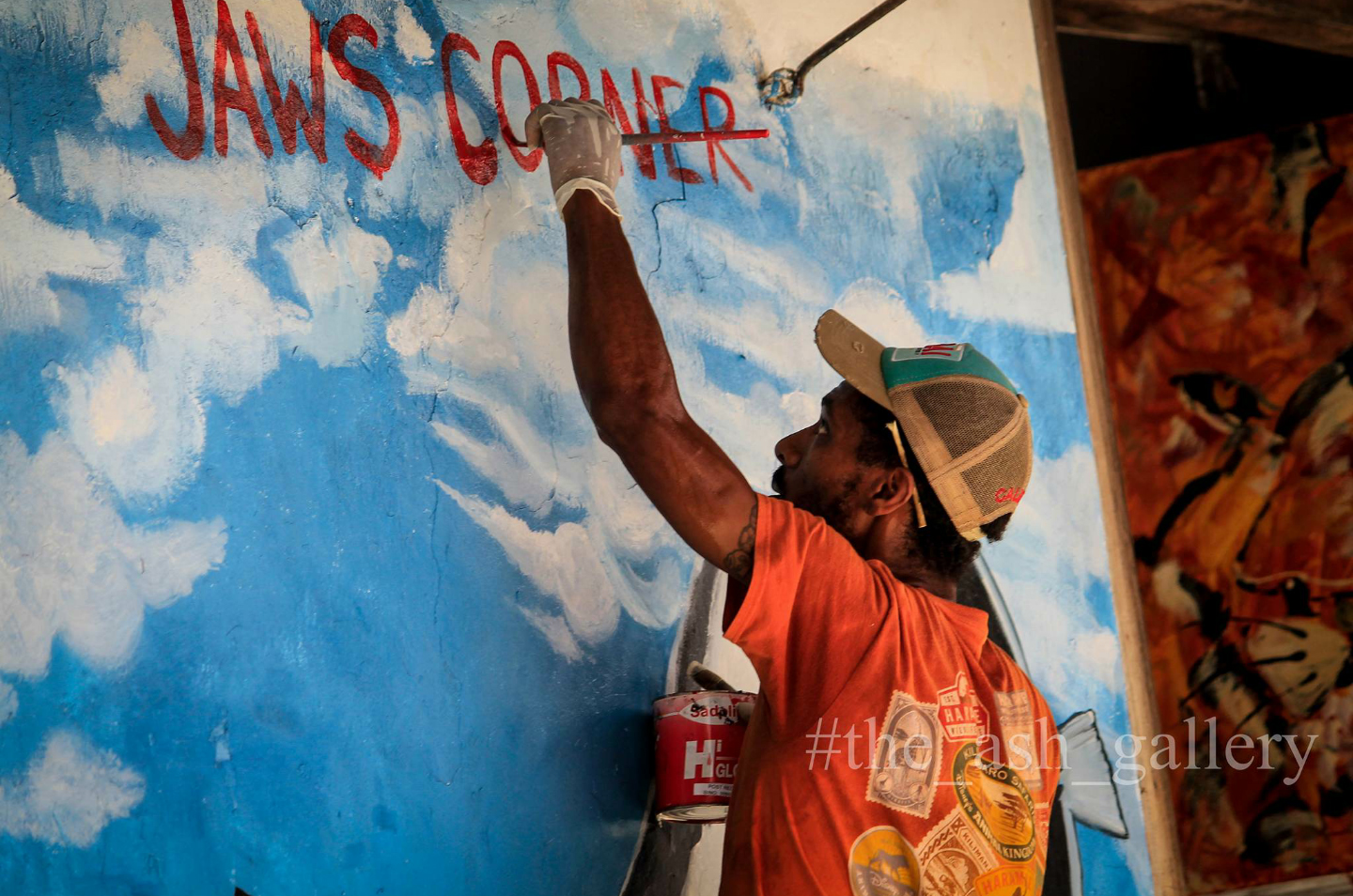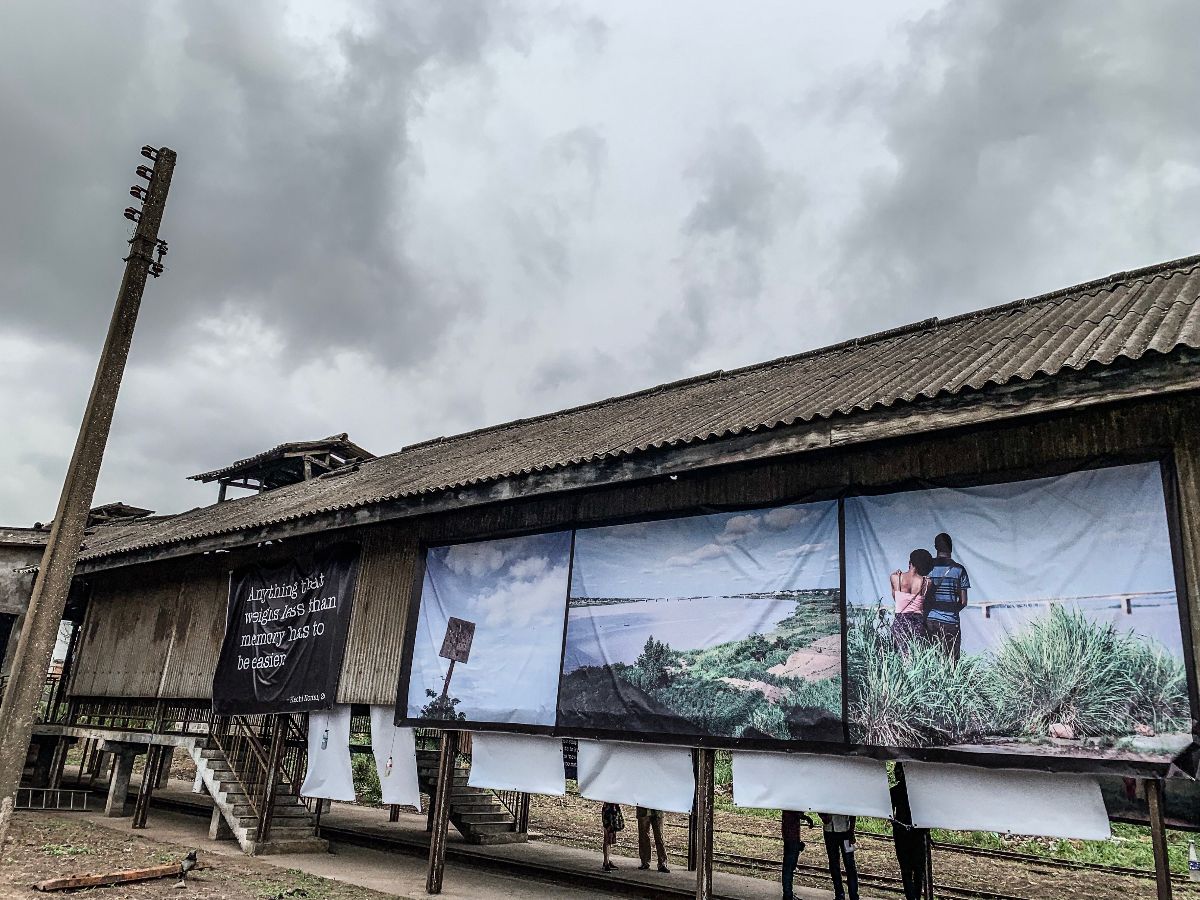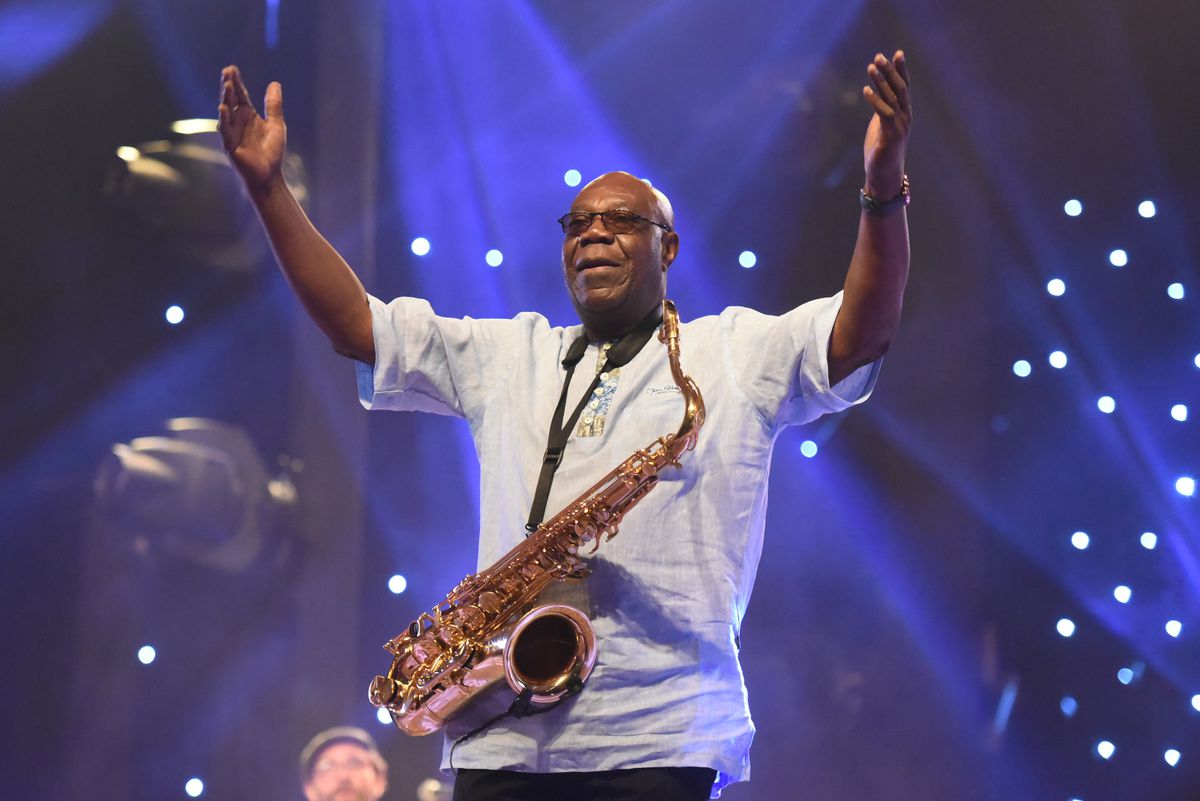I was introduced to André Jones, also known as Natty Rebel, and his works of art sometime in late 2014. At the time, he was part of a group exhibition featuring Oakland based East African artists who had found inspiration to explore the motif of home for a project themed: “Home Away from Home”. Standing across from his paintings in a gallery in Oakland, CA, I was enamored by André Jones’ meticulous hand and depth of sight—he had taken the medium to radical ends. I held my gaze on his opulent painting, marveling at it longer than I expected. I knew I had found something exceptional.
André Jones is an illustrator, designer and muralist. He was born and raised in Northern Virginia; he graduated with a Bachelor of Arts in Commercial Arts from Virginia Commonwealth University.
The breadth of his visual language, rich and diverse, often, has recurrent themes of Afrocentric representations—deeply woven expressions of Afro-Diasporic leitmotifs and sacred geometric concepts. His expansive creativity, full of hints of humor, is accessible yet packed with explosive statements, redefining urban communities—telling of his artistic aptitude.
A year or so later, “Natty Rebel” is making waves internationally for his work. Stretching his creativity beyond American boarders and exploring the walls of Ethiopia, Zanzibar and Tanzania, his remarkable street art—animated yet meaningful —is adding to the already vivid city streets.
In an interview with AS4A, André Jones spoke to the relevance of his artistic work and the significance of public art, his recent international work, his desire to build bridges that link him with his African Ancestry, and what it means to leave a mark publicly in: Addis Ababa, Ethiopia; Stone Town, Zanzibar; and Dar es Salaam, Tanzania.
AS4A: Who is Natty Rebel?
André Jones: Natty Rebel is a personified alter ego that many people of color have taken on to embrace and express pride in our features, skin complexion and hair types. On a personal note, Natty Rebel is a left-handed African man who likes to farm and paint. He was always punished for drawing in school and was told he could never make living drawing cartoons. Taking pride in his African heritage, he has always identified and associated with those who expressed an artistic and Afrocentric mind state.
AS4A: What’s the meaning behind your code-name?
André Jones: Natty Rebel has been my alias since 1998; I started using it when I was screen printing t-shirts and recording music in Richmond Virginia. The name is inspired by two of my favorite Bob Marley songs: “Ride Natty Ride” and “Soul Rebel”. Both songs depict a radically rebellious nature against the system: a longing to be free.
AS4A: Tell us about your art, how would you categorize it?
André Jones: My art is a hybrid of urban street art and east African orthodox Coptic tradition mixed with afro-contemporary realism. My canvas is usually painted with African Diasporic themes and sacred geometric concepts. My portraits tend to play on borderline realism and animated caricatures. I can execute life like portraits, but I tend to animate my characters to give them identifiable personas. I have a grand sense of humor so you’ll also find playful antics in my imagery.
AS4A: Do you call yourself a “muralist”?
André Jones: I don’t really call myself any one thing in particular, but yes, I do hope that people see and remember me as a muralist first and foremost. Painting murals gives me the biggest rush. I buy paint from Home Depot just so I have gallons ready at all times. And truthfully, my favorite artists were muralist: John Biggers was an African-American muralist from North Carolina and Diego Rivera from the Mexican Mural Movement.
AS4A: What inspires your mural works?
André Jones: I love public art! Well-done graffiti, murals, and big canvas paintings have always inspired me. I think large size painting have more of a WOW factor. Whenever I do public murals, I get to know that particular community better.
AS4A: Apart from the extraordinary detail and meticulously sharp eye that goes into your artwork, what informs your creative process?
André Jones: What fuels my creative process the most is being an illustrative storyteller. I get excited at the thought of a new painting and how people will interpret it. I can be very literal in my approach, so I feel it’s very important to carefully layout the background, give proper representation to characters, choose the right costumes, etc. I love problem solving and researching unfamiliar subjects. As a muralist and illustrator, I want to be good if not great at drawing anything I’m challenged with.
AS4A: You’ve been working a great deal on Afrocentric representations. Tell me about your recent commissioned mural work in Oakland, CA.
André Jones: I just finished a “Dub Nation” mural in downtown Oakland by the Au Lounge. It’s for my Golden State Warrior fans! I did the original painting last year when the Warriors won the NBA final. The concept was to draw Oakland as a woman, and if Oakland were a woman what would she look like? An image of a ‘sister’ with an extremely large Afro wearing a Warrior jersey and the California poppy in her hair is what I ended up with.
AS4A: You were recently in East Africa —Ethiopia, Zanzibar, and Tanzania. Was that your first time?
André Jones: No, I was in Ethiopia for the Millennium Celebration in 2007, and I’ve been to Tanzania and Zanzibar twice before.
AS4A: I’m curious. What was the inspiration to work in these countries?
André Jones: I had/have so many reasons that it would be easier to list the reasons why I wouldn’t. To start with, I’ve always been fascinated and in love with Abyssinia, or what is now known as Ethiopia, Eritrea and Somalia. I believe it’s the birthplace of humanity, and has some of the oldest relics and artwork. As for Tanzania, the Black Panthers living in exile—Mama Charlotte and Pete O’Neal who are like family—have a compound in Tanzania, so I went to visit them. When it comes to Zanzibar, not only is Zanzibar my favorite place on Earth because of its beautiful beaches and hospitable Stone Town community, but I also have three beautiful children that live there: Nukupendo Sana Lulu, Jabu, and Jazi.
AS4A: Tell us about some of the work you did while you were there.
André Jones: The first mural I worked on was in Arusha, Tanzania. It was an honor to be received at the U.A.A.C.C. (United African Alliance Community Center) compound, run and owned by Black Panther Pete and Charlotte O’Neal. I did a U.A.C.C. graffiti inspired painting in their dining hall, and a huge lion on the outside wall.
 In Ethiopia, I did four murals: The first was for Addis Ababa University School of Architecture. I got to share creative techniques and approaches to design as well as discuss cultural similarities with Ethiopian college students. The second was two murals for Effoi Pizza Restaurant, one in Kazanchis and the other in the Chechinya neighborhood of Addis Ababa. Simultaneously, in the evenings, I worked on smaller murals at the Gotera Condominiums in Addis Ababa, for my good brethren Ras Mikey C.
In Ethiopia, I did four murals: The first was for Addis Ababa University School of Architecture. I got to share creative techniques and approaches to design as well as discuss cultural similarities with Ethiopian college students. The second was two murals for Effoi Pizza Restaurant, one in Kazanchis and the other in the Chechinya neighborhood of Addis Ababa. Simultaneously, in the evenings, I worked on smaller murals at the Gotera Condominiums in Addis Ababa, for my good brethren Ras Mikey C.
Zanzibar was a little harder to paint a mural because of the traditional Islamic culture. Besides the famous wood carved doors of Stone Town, there is very little public art. However, the city’s restoration department found an excellent wall for me at “Jaws Corner”, a place where community elder men congregate and talk politics, and watch soccer. The mural is a man eating a shark.
AS4A: Why public art/ murals?
André Jones: Murals are great! Gallery exhibitions are cool but most people don’t go to museums or art galleries. Murals get to be seen by a wider population; it gives everyday people interaction with art without having to break from their daily activities. You’re walking down the street and WHAM, there it is! Plus, it can have a dramatic impact, consciously or subconsciously, on the attitudes of passers by.
“The writing is on the wall!” Graffiti and Murals are the modern day Hieroglyphics. Public art has always signified what the people of a society have been through and dream of.
AS4A: And how do you interject your creative idea while showing consideration for the culture of a place you’re working in?
André Jones: Working as a Commercial Artist for over 10 years, I’ve learned to separate my personal work from public work. Whenever I’m commissioned to do a project involving cultural heritage, I make sure I research and focus on images, and symbolisms, that best connect to the story. When I worked for the Philadelphia Mural Arts Program, we would talk with the neighborhood or community before doing a mural. I still like to use that approach.
AS4A: While it was not your first time travelling to East Africa, it was a first experience working in the three countries—what perspective have you gained?
André Jones: Painting and working in Africa was a dream come true! It was such a joy and honor just to be there, and for people in East Africa to know my works was surreal. Once I did the first mural at Addis Ababa University (EiABC), the word spread and the projects kept coming. When it was all said and done, my art experience looked like this: 9 Murals and 5 canvas paintings in 5 months, in 3 Countries (2 Murals in Tanzania, 1 mural in Zanzibar, and 6 murals and 5 canvases in Ethiopia).
AS4A: How were your murals received, in all three countries?
 André Jones: Over all, well. For the most part I received positive feedback and admiration. There was one painting that I did on the side of Efoy, an Ethiopian Pizza restaurant, which got some mixed reviews. It’s quite common in Ethiopian culture for people to feed one another as an act of kindness; this is called “Gursha”. So I painted a woman feeding another woman, and the older men who hangout at a bar next-door complained saying, “they look like Lesbians!” I respected their opinion but I did not change the art. The owner of the restaurant loved the mural and understood my illustrative intention.
André Jones: Over all, well. For the most part I received positive feedback and admiration. There was one painting that I did on the side of Efoy, an Ethiopian Pizza restaurant, which got some mixed reviews. It’s quite common in Ethiopian culture for people to feed one another as an act of kindness; this is called “Gursha”. So I painted a woman feeding another woman, and the older men who hangout at a bar next-door complained saying, “they look like Lesbians!” I respected their opinion but I did not change the art. The owner of the restaurant loved the mural and understood my illustrative intention.
AS4A: Is it important for you, or for your work, to gain cultural acceptance?
André Jones: As a humanitarian yes, as an artist no! I would love for everyone, especially Africans throughout the Diaspora to love my work, but I know this is not realistic. I respect all cultures and groups of people but there are some cultures that look down on being left handed. I am unapologetically left-handed!
I’m thankful that my work, which is part of who I am, is widely accepted in so many regions of Africa. I think this is because I create from the heart and genuinely try to build bridges that link me with my African Ancestry, and distant relatives on the continent.
AS4A: Any upcoming plans to do artwork in Africa, in the future?
I met with people in Addis Ababa who want to start a mural program, additionally; my work is currently on view in a solo exhibition at Dinq Art Gallery in the Kazanchis neighborhood of Addis. So yes, I plan on going again in 2017, or earlier.
AS4A: What do you wish people would ask you about your art?
André Jones: Anything they like! I like the admiration. I like the criticism. I like the thought provoking questions… this is how we grow as artists and people!









